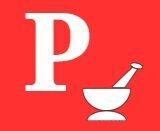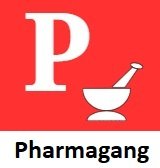Here we will discuss international cosmetics GMP regulations. ISO is the most widely accepted standard for cosmetics. FDA guidance for cosmetic good manufacturing practice and EU regulations are also important.
Need Of cosmetics GMP Regulations: Certain ingredients used in cosmetics such as fragrances and preservatives, can trigger an allergic reaction. Some beauty creams were reported to contain excess amounts of mercury, with poisoned consumers exhibiting toxic neurological symptoms. Regulators had to take action to ensure consumer safety.
ISO 22716: Cosmetics GMP
ISO is an independent, non-governmental international organization with a membership of 164 national standards bodies. International Cooperation on Cosmetic Regulation (ICCR) – a joint effort by the USA, the European Union, Japan and Canada – agreed in their July 2008 meeting to implement ISO 22716 in their respective regions, wherever possible.
Th above countries have modified there regulations to integrate ISO 22716. The ASEAN Consultative Committee for Standards and Quality (ACCSQ) agreed to recognize ISO 22716 as equivalent to the ASEAN Cosmetic GMP guideline.
Below you can find the scope and definitions from ISO 22716.
This International Standard gives guidelines for the production, control, storage and shipment of cosmetic products. These guidelines cover the quality aspects of the product, but as a whole do not cover safety aspects for the personnel engaged in the plant, nor do they cover aspects of protection of the environment. Safety and environmental aspects are inherent responsibilities of the company and could be governed by local legislation and regulation. These guidelines are not applicable to research and development activities and distribution of finished products.
2. Terms And Definitions
For the purposes of this document, the following terms and definitions apply.
2.1 Acceptance Criteria
numerical limits, ranges, or other suitable measures for acceptance of test results
2.2 Audit
systematic and independent examination to determine whether quality activities and related results comply with planned arrangements and whether these arrangements are implemented effectively and are suitable for achieving objectives
2.3 Batch
defined quantity of raw material, packaging material or product issued from one process or series of processes so that it could be expected to be homogeneous
2.4 Batch Number
distinctive combination of numbers, letters and/or symbols, which specifically identifies a batch
2.5 Bulk Product
any product which has completed manufacturing stages up to, but not including, final packaging
2.6 Calibration
set of operations that establish, under specified conditions, the relationship between values indicated by a measuring instrument or measuring system, or values represented by a material measure, and the corresponding known values of a reference standard
2.7 Change Control
internal organization and responsibilities relative to any planned change of one or several activities covered by the Good Manufacturing Practices in order to ensure that all the manufactured, packaged, controlled and stored products correspond to the defined acceptance criteria
2.8 Cleaning
all operations that ensure a level of cleanliness and appearance, consisting of separating and eliminating generally visible dirt from a surface by means of the following combined factors, in variable proportions, such as chemical action, mechanical action, temperature, duration of application
2.9 Complaint
external information claiming a product does not meet defined acceptance criteria
2.10 Contamination
occurrence of any undesirable matter such as chemical, physical and/or microbiological matter in the product
2.11 Consumables
materials such as cleaning agents and lubricants that are used up during cleaning, sanitization or maintenance operations
2.12 Contract Acceptor
person, company or external organization carrying out an operation on behalf of another person, company or organization
2.13 Control Verification
that acceptance criteria are met
2.14 Deviation
internal organization and responsibilities relative to the authorization to deviate from specified requirements due to a planned or unplanned and, in any case, temporary situation concerning one or several activities covered by the Good Manufacturing Practices
2.15 Finished Product
cosmetic product that has undergone all stages of production, including packaging in its final container, for shipment
2.16 In-Process Control
controls performed during production in order to monitor and, if appropriate, to adjust the process to ensure that the product meets the defined acceptance criteria
2.17 Internal Audit
systematic and independent examination made by competent personnel inside the company, the aim of which is to determine whether activities covered by these guidelines and related results comply with planned arrangements and whether these arrangements are implemented effectively and are suitable for achieving objectives
2.18 Major Equipment
equipment specified in production and laboratory documents which is considered essential to the process
2.19 Maintenance
any periodic or unplanned support and verification operations designed to keep premises and equipment in proper working condition
2.20 Manufacturing Operation
set of operations from the weighing of raw materials to the making of the bulk product
2.21 Out-Of-Specification
examination, measurement or test result that does not comply with defined acceptance criteria
2.22 Packaging Operation
all packaging steps including filling and labelling, which a bulk product has to undergo in order to become a finished product
2.23 Packaging Material
any material employed in the packaging of a cosmetic product, excluding any outer packaging used for transportation
Note 1 to entry: Packaging materials are referred to as primary or secondary according to whether or not they are intended to be in direct contact with the product.
2.24 Plant
location for production of cosmetic products
2.25 Premises
physical location, buildings and supporting structures used to conduct receipt, storage, manufacturing, packaging, control and shipment of product, raw materials and packaging materials
2.26 Production
manufacturing and packaging operations
2.27 Quality Assurance
all those planned and systematic activities necessary to provide confidence that a product satisfies given acceptance criteria
2.28 Raw Material
any substance going into or involved in the manufacturing of a bulk product
2.29 Recall
decision made by a company to call back a product batch that has been put on the market
2.30 Reprocessing
re-treatment of all or part of a batch of finished product or bulk product of an unacceptable quality from a defined stage of production so that its quality may be rendered acceptable by one or more additional operations
2.31 Return
sending finished cosmetic products which may or may not present a quality defect back to the plant
2.32 Sample
one or more representative elements selected from a set to obtain information about that set
2.33 Sampling
set of operations relating to the taking and preparation of samples
2.34 Sanitization
operation, used to reduce undesirable micro-organisms on inert contaminated surfaces depending on the objectives set
Note 1 to entry: It is the action of reducing generally invisible contaminants from a surface.
2.35 Shipment
set of operations relative to the preparation of an order and its putting in a transport vehicle
2.36 Waste
any residue of a production operation, transformation or use, any substance, material, product that its holder intends for disposal.
Full text is not legally available free and need to be purchased from offical ISO website here.
How to get / what is Process for ISO certification?
To get the ISO certification, please fill up below given form & our team will contact you.
Step-1 Query from the Client
Step-2 Filling up the Application form
Step-3 Agreement Approval
Step-4 Stage-1 Audit
Step-5 Stage-1 Audit NC’s Closing
Step-6 Stage-2 Audit
Step-7 Stage-2 Audit NC’s Closing
Step-8 Certificate Release
Only informative sections of standards are publicly available. To view the full content, you will need to purchase the standard by clicking on the “Buy” button.
US FDA Cosmetics GMP Guidance
Under the law, cosmetic products and ingredients do not need FDA premarket approval, with the exception of color additives. However, FDA may take regulatory action if they have reliable information indicating that a cosmetic is adulterated or misbranded.
FDA can and does inspect cosmetic manufacturing facilities to assure cosmetic product safety and determine whether cosmetics are adulterated or misbranded under the FD&C Act or FPLA.
This document provides guidance to industry and other stakeholders (e.g., consumer interest groups, academia, other regulatory groups) on FDA’s current thinking concerning what constitutes Good Manufacturing Practices (GMPs) for cosmetics. It is intended to assist industry and other stakeholders in identifying the standards and issues that can affect the quality of cosmetic products.
FDA’s guidance documents, including this guidance, do not establish legally enforceable responsibilities. Instead, guidances describe our current thinking on a topic and should be viewed only as recommendations, unless specific regulatory or statutory requirements are cited. The use of the word should in FDA guidances means that something is suggested or recommended, but not required.
You can download and view US FDA cosmetics guidance below.
[embeddoc url=”http://www.mediafire.com/file/7j1bgn4ei5f45u8/usfdacosmeticsgmpguidance.pdf/file” height=”30%” download=”all” viewer=”google”]
European Cosmetics GMP
ISO 22716 GMP is one of the foundations of the new European Union regulations for Cosmetics. This sets strict requirements for ensuring consumer safety.
The ISO 22716 Good Manufacturing Practices (GMP) for cosmetics guide was designed to give guidelines for the production, control, storage, packaging, labeling, shipment, and distribution of cosmetic products.
EC Cosmetics Regulation 1123/2009
After reviewing its cosmetics regulation, the EU published the revised edition in December 2009 in the Official Journal of the European Union. Within the framework, all cosmetic products circulating in the European market should be produced under ISO 22716 GMP.
Aside from that, ISO 22716 defines the responsibilities of the participants in the cosmetics manufacturing chain:
- ingredient manufacturers
- end-product companies
- distributors
- importers
- exporters
View full text of Europe Cosmetics GMP Regulation Here
Some More Cosmetics GMP
Schedule M2 Cosmetics GMP In India
India Cosmetics GMP Schedule M2
Nigeria Cosmetics GMP:
Nigeria Cosmetics GMP Guidelines
You May Also Like:
National And International Pharmaceuticals & Cosmetics Guidelines Compilation
Compilation Of International GMP and cGMP Guidelines In Pharmaceuticals


PharmaGang’s blog post on international cosmetics regulations, including GMP, ISO 22716, USFDA, and EC regulations, is a fantastic resource for understanding the global standards in the cosmetics industry. It provides valuable information on quality control, manufacturing practices, and regulatory compliance. A must-read for anyone involved in the cosmetics sector. Well done!
This article provides a comprehensive overview of international regulations governing cosmetics, such as GMP, ISO 22716, USFDA, and EC regulations. It emphasizes the importance of adhering to these standards to ensure the quality and safety of cosmetic products. Understanding and complying with these regulations is crucial for manufacturers and consumers alike. A great resource for anyone looking to navigate the complex world of cosmetic regulations.